 |
 |
 |
| |
Early Trials of siRNA ALN-HSD for NASH Show Safety, Drop in Target mRNA
|
| |
| |
EASL Congress 2023, June 21-24, Vienna
Mark Mascolini
Phase 1 studies of the small interfering RNA (siRNA) agent ALN-HSD yielded evidence of safety in healthy volunteers and people with nonalcoholic steatohepatitis (NASH) and evidence of a dose-dependent decline in mRNA of a target gene associated with NASH in people with that condition [1].
siRNAs are noncoding double-stranded RNA molecules that degrade specific mRNA of target genes. ALN-HSD is a subcutaneously administered N-acetylgalactosamine (GalNAc)-conjugated
siRNA that homes to mRNA of the HSD17B13 gene involved in NASH. A two-part, randomized, double-blind, placebo-controlled trial assessed safety, pharmacokinetics, and pharmacodynamics of ALN-HSD in healthy adults (Part A) and safety plus HSD17B13 mRNA targeting in people with NASH (Part B) [1,2].
Part A, which is completed, involved 58 healthy adults randomized in a 3-to-1 ratio to get a single subcutaneous dose of ALN-HSD in ascending doses of 25, 100, 200, 400, or 800 mg or placebo. Age averaged in the late 20s and early 30s across study arms, about 57% of volunteers were men and 57% white. The study group included 14 Japanese people.
The investigators judged the only serious treatment-emergent adverse event, mild tonsillitis, unrelated to ALN-HSD. Mild and transient injection site reactions were the only adverse event that arose in at least 10% of participants, affecting 11%. Liver enzymes ALT and AST did not change during the trial. Serious treatment-emergent adverse events (TEAEs) and TEAEs of clinical interest did not emerge in the trial.
As with other GalNAc-conjugated siRNAs, levels of ALN-HSD in plasma dropped steadily in the 24 hours after dosing. ALN-HSD concentrations rose in a slightly more than dose-proportional manner as doses of the siRNA rose. Excretion in urine ranged from 17% to 37% across doses.
Part B of the trial is an ongoing double-blind, placebo-controlled, multiple-dose study in people with NASH. Participants had to be 18 to 65 years old, have a body mass index between 18 and 40 kg/m2, a diagnosis of NASH, and a screening liver biopsy with a nonalcoholic fatty liver disease (NAFLD) activity score of 3 or more. No participants had homozygous protective alleles for any of the 3 HSD17B13 variants.
Researchers randomized 46 people with NASH in a 4-to-1 ratio to 25, 200, or 400 mg of subcutaneous ALN-HSD or to placebo on day 1 and 12 weeks later on day 85. Participants had liver biopsies before starting ALN-HSD and 6 or 12 months after dosing. Forty-five people had received at least one dose of ALN-HSD when researchers tabulated the following data.
Age averaged in the mid-50s across study arms, slightly more than half of participants were men, and about three quarters were white. Body mass index (BMI) averaged 34.9 kg/m2 in 9 people getting placebo and 33.5 kg/m2 in 36 getting ALN-HSD. NAFLD activity score averaged 4.2 in the placebo group and 4.4 in those getting ALN-HSD. Fibrosis stage averaged 1.6 in people receiving placebo and 1.7 in the ALN-HSD group.
COVID-19 judged unrelated to ALN-HSD was the only adverse event affecting at least 10% of participants, developing in 13.9%. In participants getting ALN-HSD, researchers counted 1 serious TEAE (appendicitis), 2 severe TEAEs (appendicitis and tooth infection), 1 TEAE leading a participant to stop therapy (increased liver function test levels resulting from hepatitis E), and no TEAEs leading to withdrawal from the study.
Compared with placebo, numerically lower ALT levels, biopsy-derived NAFLD activity scores, and fibrosis stage were seen with ALN-HSD over 6 or 12 months. Among participants with day 169 liver data, reductions in HSD17B13 mRNA were dose-dependent-the higher the dose of ALN-HSD, the lower the mRNA level. Median percent changes from baseline HSD17B13 mRNA at 6 months measured 4.7% with placebo, -39.8% with 25 mg of ALN-HSD, -71.4% with 200 mg, and -78.3% with 400 mg. Among people with month-12 biopsies so far, median percent change from HSD17B13 mRNA stood at -1.1% in 3 placebo participants and -30.6% in 10 people getting 200 mg of ALN-HSD. The investigators characterized these declines in liver mRNA expression "robust."
A phase 2 trial is enrolling people with NASH to assess the impact of ALN-HSD on liver function, fibrosis, and inflammation [3].
References
1. Sanyal A, Taubel J, Badri P, et al. Phase 1 study of the RNA interference therapeutic ALN-HSD in healthy adults and patients with non-alcoholic steatohepatitis. EASL Congress 2023, June 21-24, Vienna. Abstract OS-062.
2. ClinicalTrials.gov. A study of ALN-HSD in healthy adult subjects and adult patients with nonalcoholic steatohepatitis (NASH). ClinicalTrials.gov identifier NCT04565717. https://clinicaltrials.gov/ct2/show/NCT04565717
3. ClinicalTrials.gov. A study to evaluate the efficacy and safety of ALN-HSD in adult participants with non-alcoholic steatohepatitis (NASH) with fibrosis with genetic risk factors (NASHGEN-2). ClinicalTrials.gov identifier NCT05519475. https://clinicaltrials.gov/ct2/show/NCT05519475
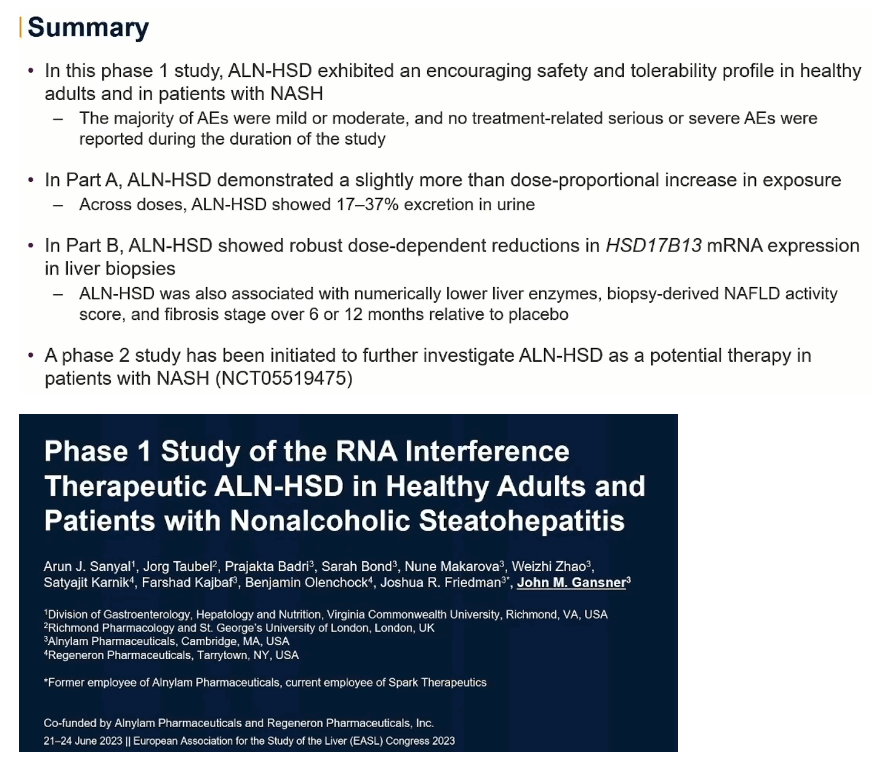
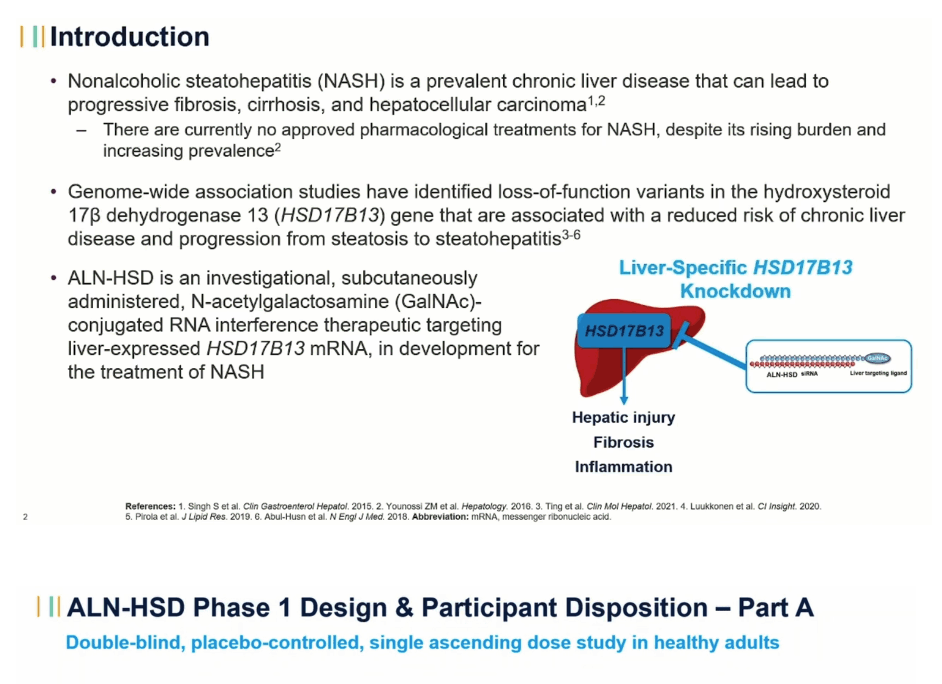
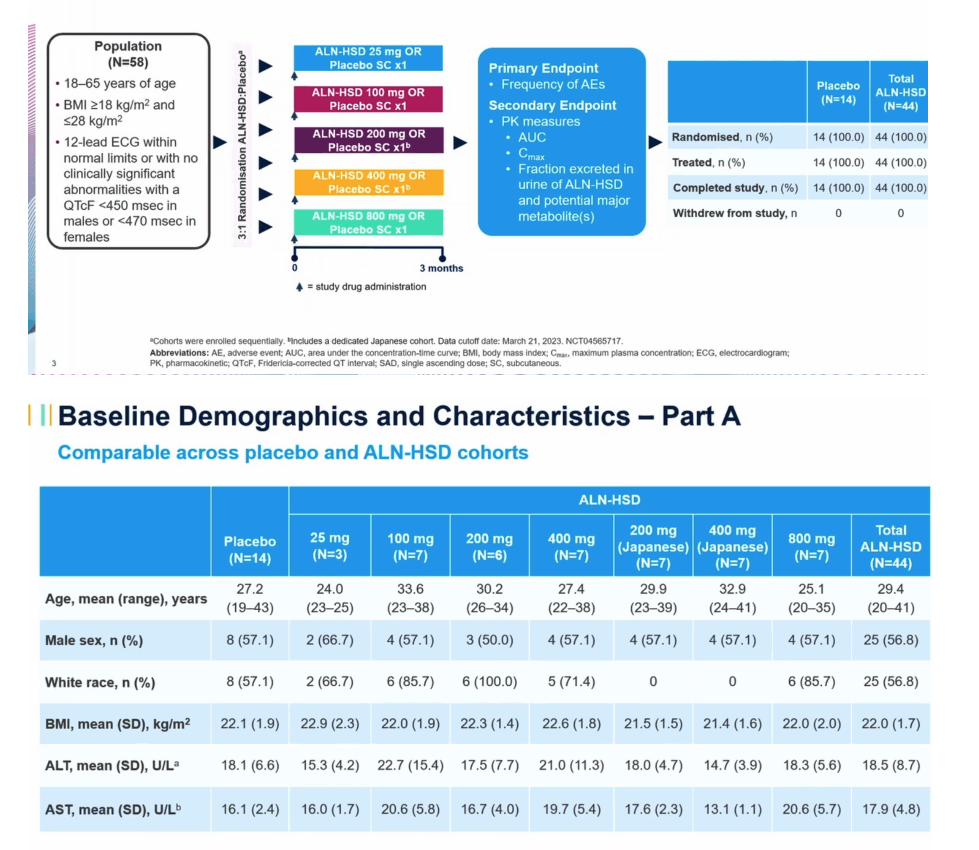
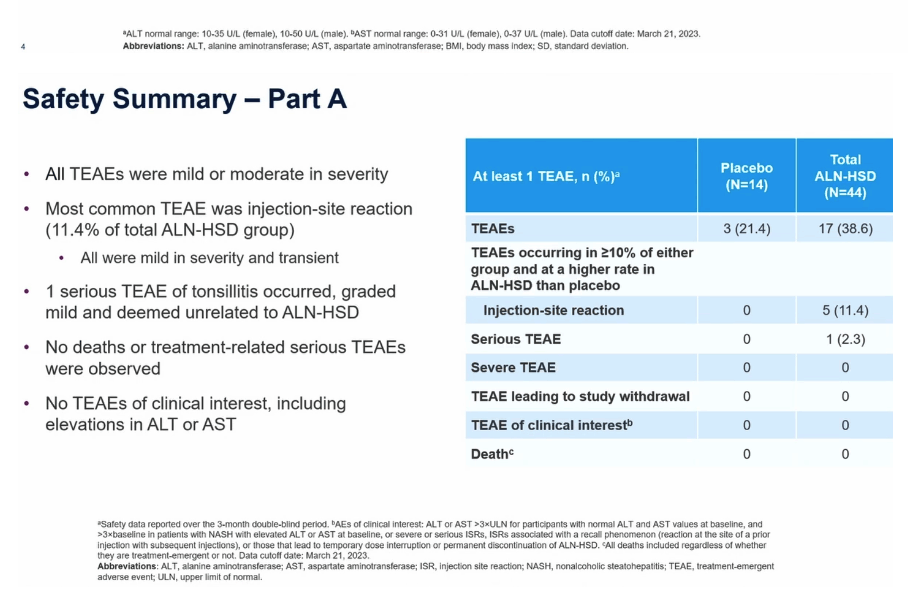
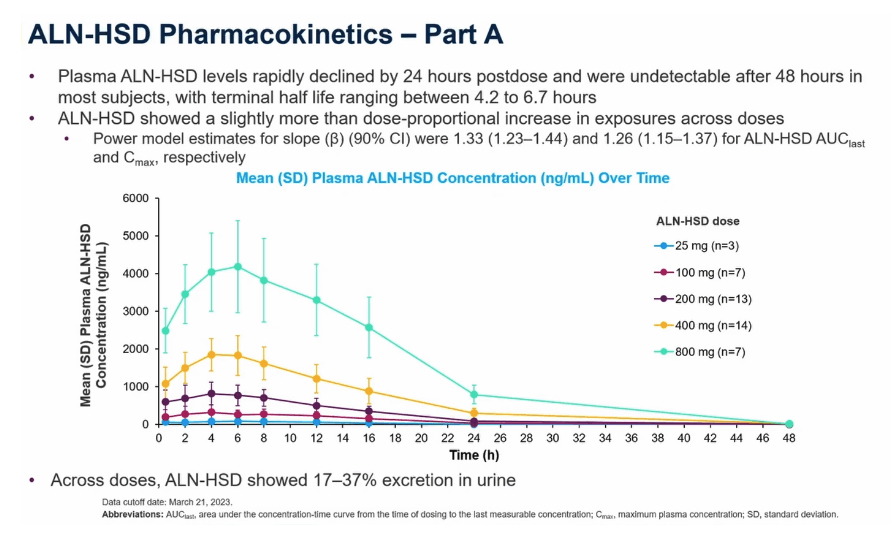
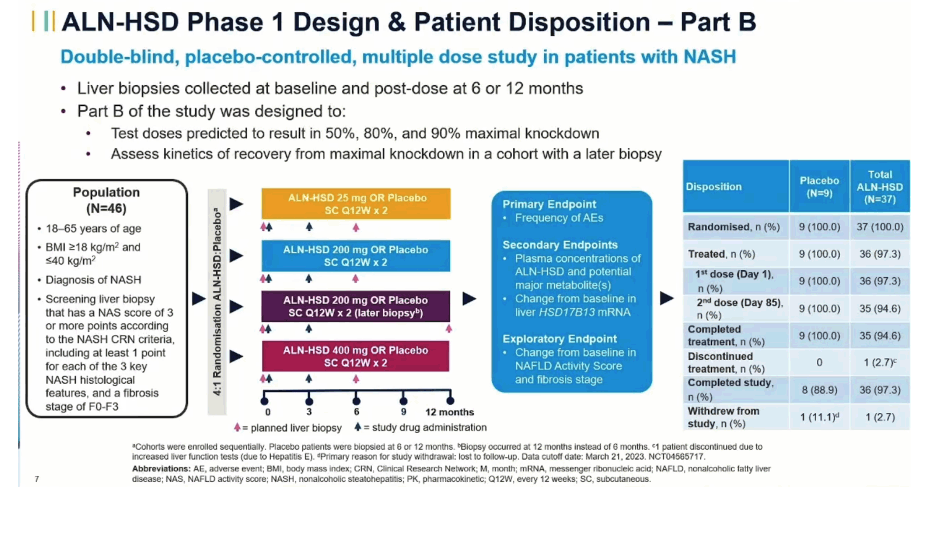
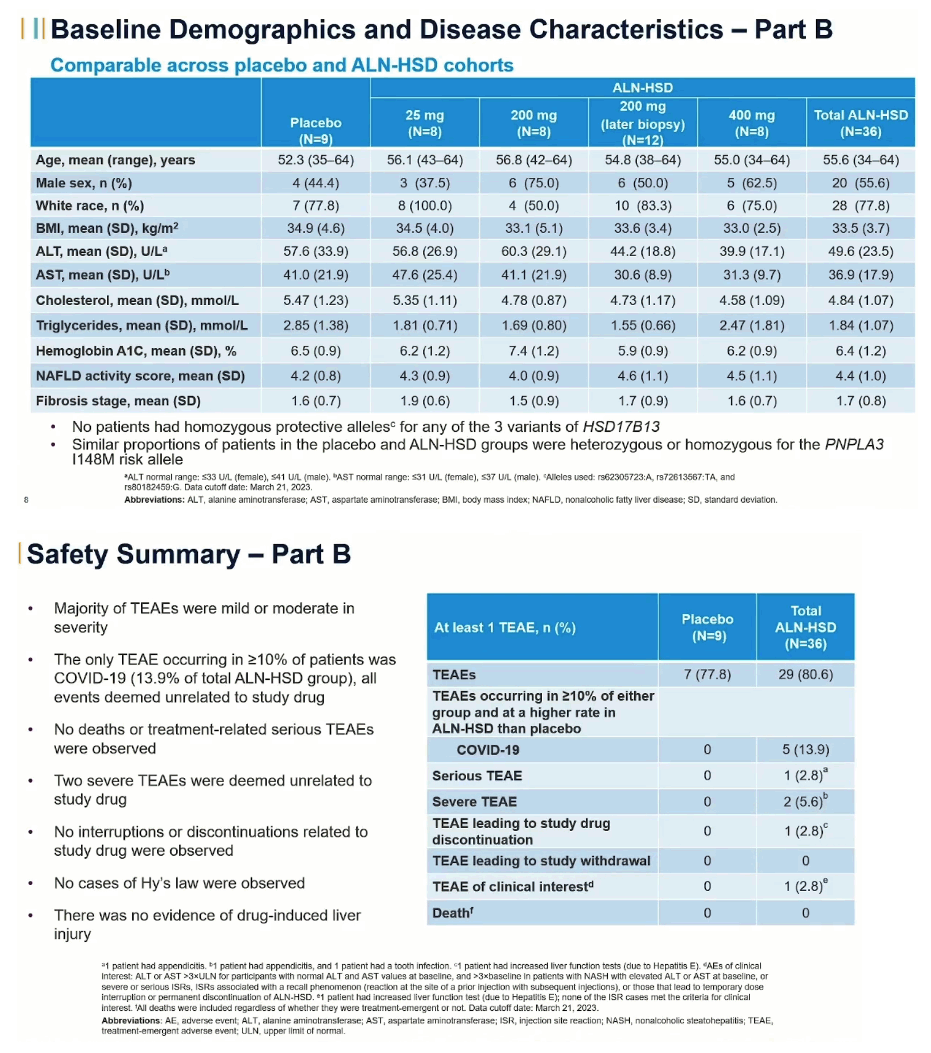
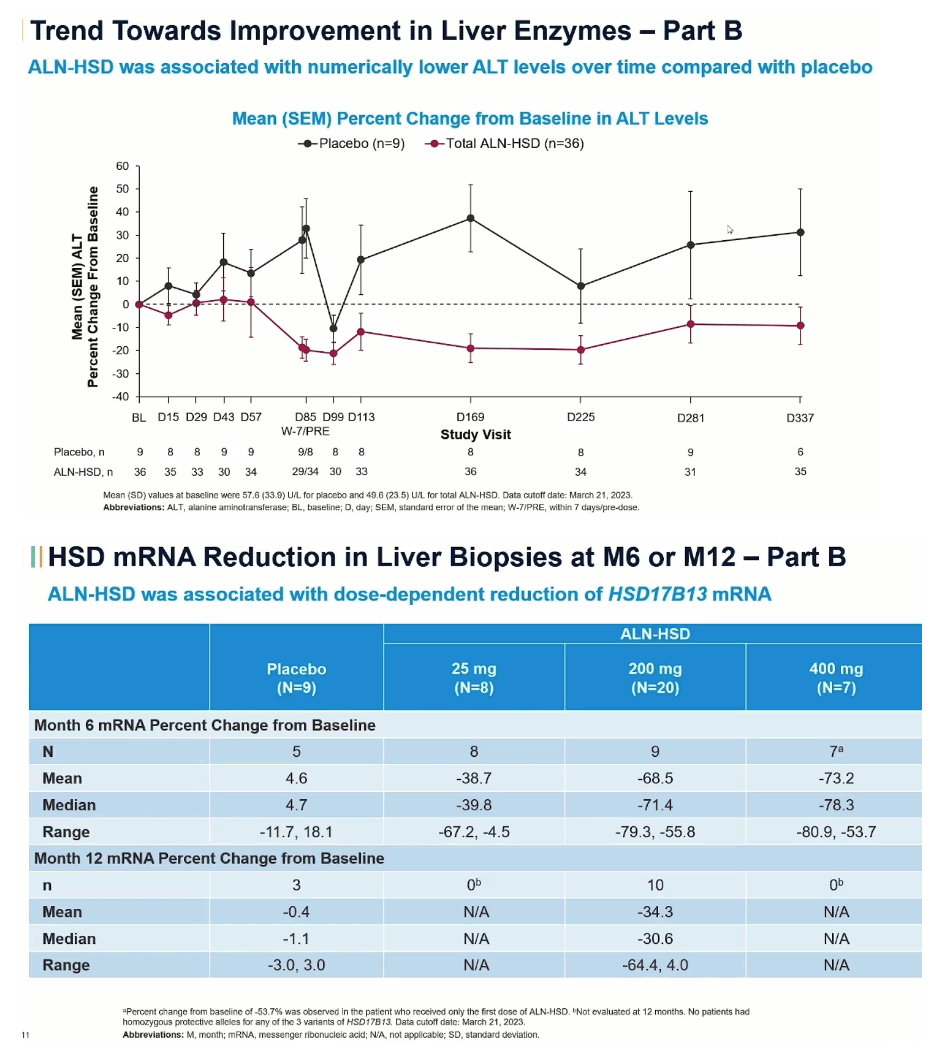
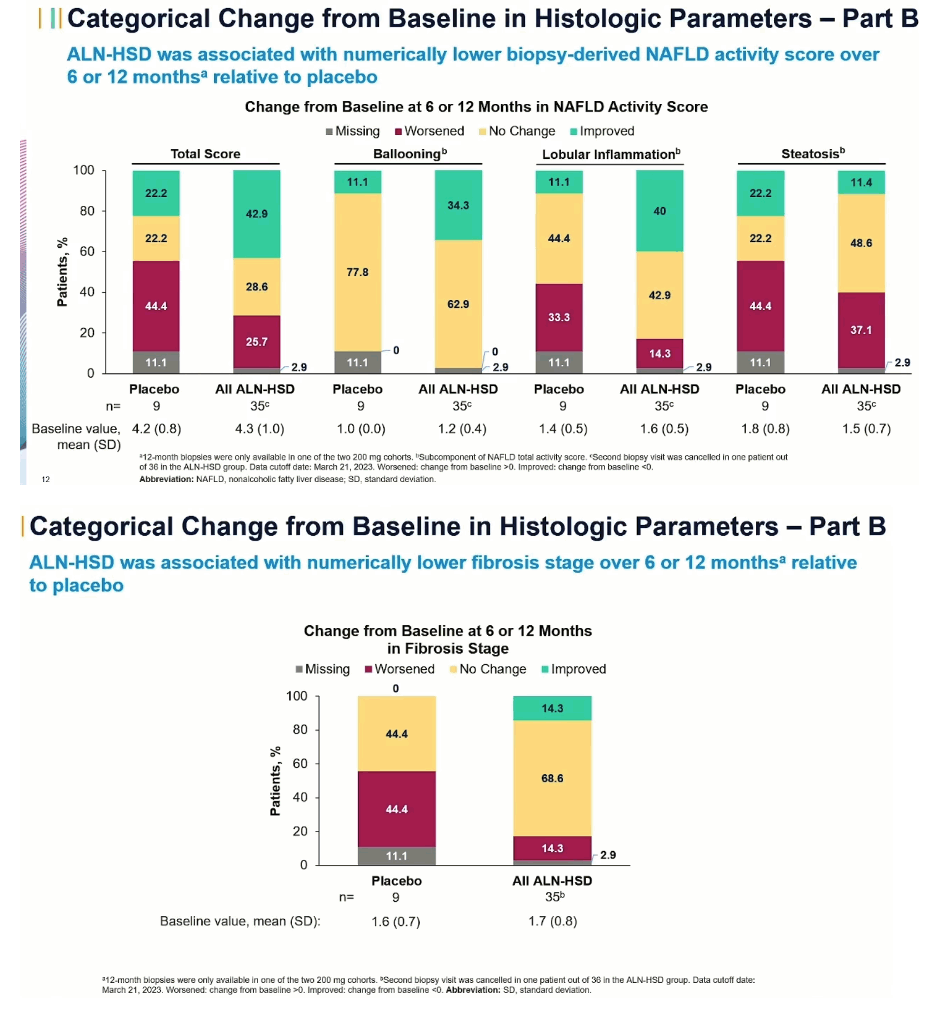
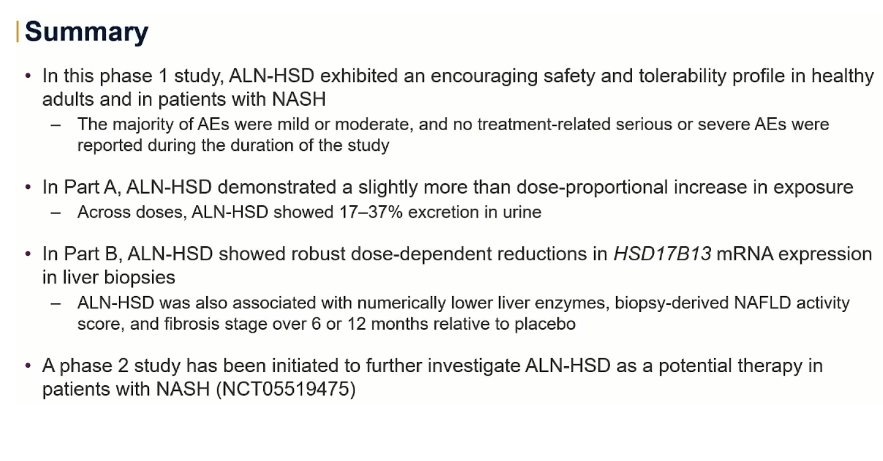
|
| |
|
 |
 |
|
|